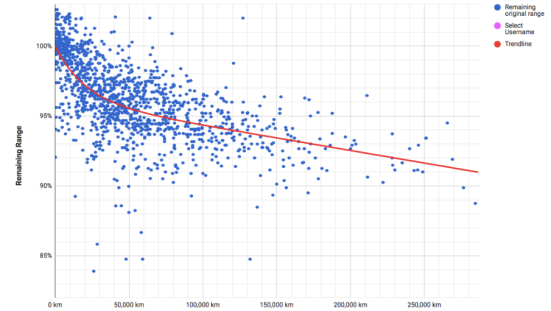kavyboy
Active Member
Surely they wouldn't do this after the dieselgate scandal, would they? That would be insane.If they're messing around with EPA ratings to give falsified watt hours / mile calculations they can hide any amount of degradation they want. They can reduce your capacity to 10% "for longevity" so you only get 20 real miles, but change the watt hours so your car shows more rated miles range than it ever had when new. It's dishonest and potentially illegal if the EPA investigates, but they might be subtlely doing it according to the last few posts. I'll check my driving and see what it shows.





